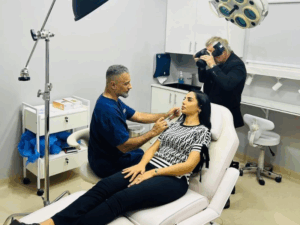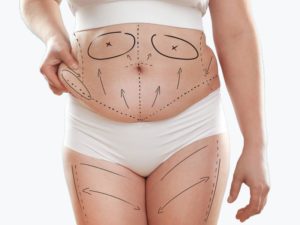BREAST LIFT
Understanding the Different Types of Breast Lift Techniques

A breast lift, or mastopexy, is a surgical procedure that lifts and reshapes sagging breasts. Over time, breasts can lose their firmness and shape due to aging, pregnancy, breastfeeding, weight fluctuations, or genetic factors. A breast lift can help restore the natural shape and position of the breasts by removing excess skin, tightening the breast tissue, and repositioning the nipples.
Breast lift surgery can be performed using different types of breast lift techniques depending on the extent of sagging, the size and shape of the breasts, and the patient’s aesthetic goals. In this article, we will discuss the different types of breast lift techniques and how they work.
1. Crescent lift
A crescent lift is a minor breast lift procedure that involves making a crescent-shaped incision above the areola (the dark area around the nipple) and removing a small amount of skin. This technique is suitable for women with mild sagging and a small amount of excess skin. It can also be used to reposition slightly downward-pointing nipples. The crescent lift is a quick procedure that can be performed under local anesthesia and has minimal scarring.
2. Peri-areolar or Donut lift
The peri-areolar, or donut lift, is a breast lift technique that involves making a circular incision around the areola and removing a donut-shaped piece of skin. This technique is suitable for women with mild to moderate sagging and a moderate amount of excess skin. The peri-areolar lift can also be used to reduce the size of the areola if it has become stretched or enlarged. This technique has a shorter scar, which is concealed within the border of the areola.
3. Vertical or Lollipop lift
The vertical, or lollipop lift, is a breast lift technique that involves making a lollipop-shaped incision around the areola and extending down to the breast crease. This technique is suitable for women with moderate to severe sagging and a moderate to a large amount of excess skin. The vertical lift allows the surgeon to reshape the breast by removing excess skin and repositioning the nipple. The scar is shaped like a lollipop and extends vertically down the center of the breast.
4. Anchor or Inverted-T lift
The anchor, or inverted-T lift is a breast lift technique that involves making an anchor-shaped incision around the areola, extending down to the breast crease, and then following the natural curve of the breast crease. This technique is suitable for women with severe sagging and a large amount of excess skin. The anchor lift allows the surgeon to reshape the breast by removing excess skin, repositioning the nipple, and lifting the breast tissue. The scar is shaped like an anchor, with a vertical incision that extends down the center of the breast and a horizontal incision along the breast crease.
Choosing the Right Breast Lift Technique
The choice of breast lift technique depends on several factors, including the degree of sagging, the amount of excess skin, and the patient’s aesthetic goals. During the consultation, the plastic surgeon will evaluate the patient’s breast anatomy, discuss the available options, and recommend the most appropriate technique.
In general, the crescent and peri-areolar lifts are suitable for women with mild to moderate sagging and a small to moderate amount of excess skin. The vertical lift is suitable for women with moderate to severe sagging and a moderate to a large amount of excess skin. The anchor lift is suitable for women with severe sagging and a large amount of excess skin.
Regardless of the technique used, breast lift surgery is a major procedure that requires careful planning, skilled technique, and proper aftercare to achieve the best possible results. It is important to choose a board-certified plastic surgeon who has extensive experience in breast lift
Patient Testimonials








